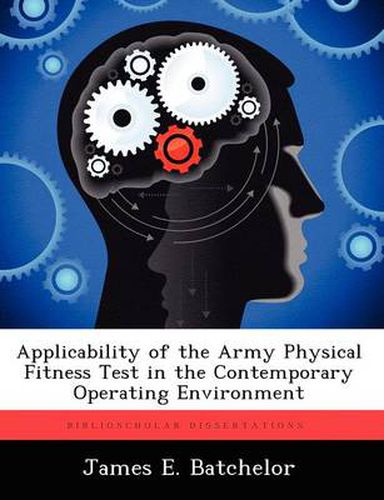Readings Newsletter
Become a Readings Member to make your shopping experience even easier.
Sign in or sign up for free!
You’re not far away from qualifying for FREE standard shipping within Australia
You’ve qualified for FREE standard shipping within Australia
The cart is loading…






This title is printed to order. This book may have been self-published. If so, we cannot guarantee the quality of the content. In the main most books will have gone through the editing process however some may not. We therefore suggest that you be aware of this before ordering this book. If in doubt check either the author or publisher’s details as we are unable to accept any returns unless they are faulty. Please contact us if you have any questions.
The purpose of this study was to determine if there is any validity to using the current Army Physical Fitness Test (APFT) to gauge Soldier readiness for combat. The study was conducted in four stages. The APFT tasks; pushup, sit-up, and run were analyzed to determine what body actions and associated muscles were used to conduct them and in what manner. In the second stage, a set of combat oriented tasks from the Training and Doctrine Command (TRADOC) physical training guide was analyzed on the same basis as the APFT tasks. In the third stage, the top six tasks from a survey of Intermediate Level Education (ILE) majors were then analyzed on the same basis as the APFT tasks and the TRADOC tasks. Finally, these three sets of tasks were compared based on body actions and their associated muscles and whether they were used to perform isometric, concentric, or eccentric contractions as an element of endurance or strength. The results showed that the APFT has major shortfalls in testing elements of both the TRADOC tasks and the combat tasks from the survey. Most notably, the APFT tests endurance almost exclusively, while the TRADOC tasks and the combat tasks require strength.
$9.00 standard shipping within Australia
FREE standard shipping within Australia for orders over $100.00
Express & International shipping calculated at checkout
This title is printed to order. This book may have been self-published. If so, we cannot guarantee the quality of the content. In the main most books will have gone through the editing process however some may not. We therefore suggest that you be aware of this before ordering this book. If in doubt check either the author or publisher’s details as we are unable to accept any returns unless they are faulty. Please contact us if you have any questions.
The purpose of this study was to determine if there is any validity to using the current Army Physical Fitness Test (APFT) to gauge Soldier readiness for combat. The study was conducted in four stages. The APFT tasks; pushup, sit-up, and run were analyzed to determine what body actions and associated muscles were used to conduct them and in what manner. In the second stage, a set of combat oriented tasks from the Training and Doctrine Command (TRADOC) physical training guide was analyzed on the same basis as the APFT tasks. In the third stage, the top six tasks from a survey of Intermediate Level Education (ILE) majors were then analyzed on the same basis as the APFT tasks and the TRADOC tasks. Finally, these three sets of tasks were compared based on body actions and their associated muscles and whether they were used to perform isometric, concentric, or eccentric contractions as an element of endurance or strength. The results showed that the APFT has major shortfalls in testing elements of both the TRADOC tasks and the combat tasks from the survey. Most notably, the APFT tests endurance almost exclusively, while the TRADOC tasks and the combat tasks require strength.